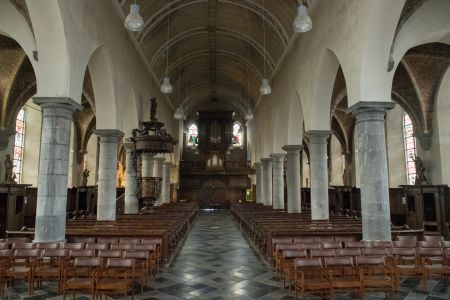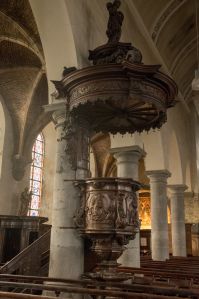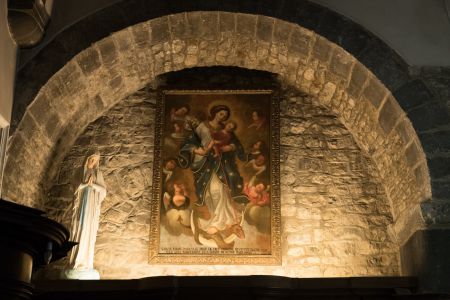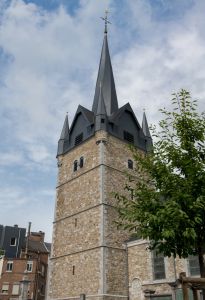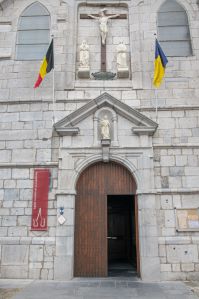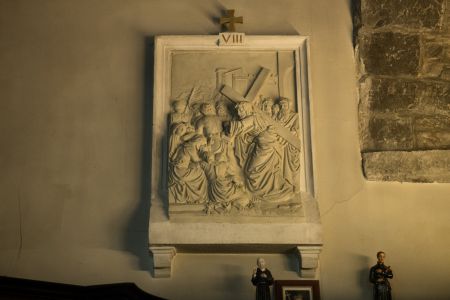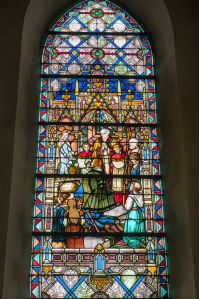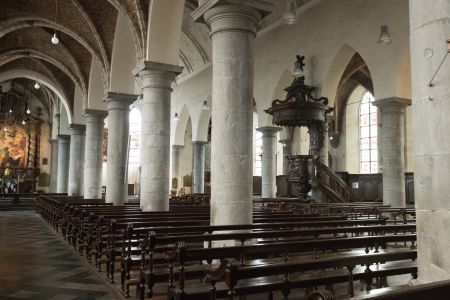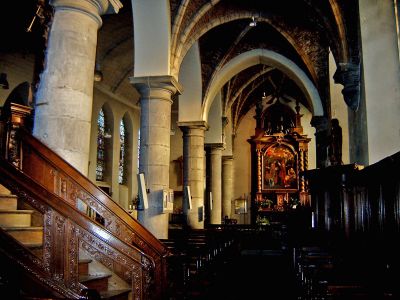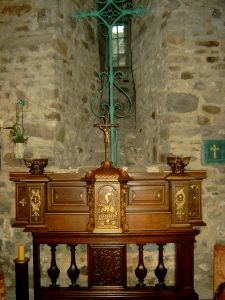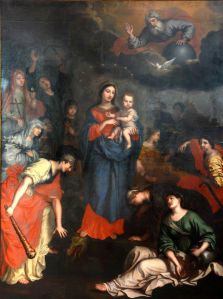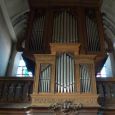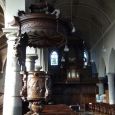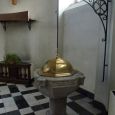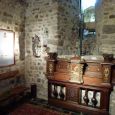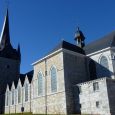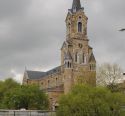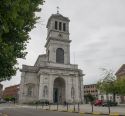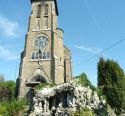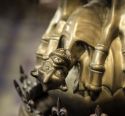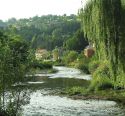Church | XIII-XVII | Gothic, Renaissance | Catholic Church



Map
Opening hours
01 January - 31 December
Mon 9.30 - 17.00
Tue 9.30 - 17.00
Wed 9.30 - 17.00
Thu 9.30 - 17.00
Fri 9.30 - 17.00
Sat 9.30 - 17.00
Sun 9.30 - 17.00
Guided tour
Pastoral Centre +32 87 67 88 80
Description
This church, which was rebuilt in the 17th century in Renaissance Gothic style, is in the historic centre of Herve.The early 13th century Romanesque tower is one of the oldest monumental buildings existing in the Herve area. It recalls the feudal period when, due to insecurity, everywhere was fortified. The walls are three metres thick furnished with loopholes.
The tower (21m), topped by a spiral spire (28m), is flanked by four watchtowers crowned with octagonal spires. On top of the spiral steeple is a very large cross decorated with lily, from 1805.
At the crossing of the transept is an octagonal belfry in which one can see the bell dating from 1518. There are guided visits for the public to the fortified tower and its steeple.
An oratory on the ground floor of the tower has a reliquary with relics coming from the main reliquary of Pope Alexander (105-115) as well as a parchment dated 1145 signed by the Abbot Wibald de Stavelot authenticating the deposit of these relics.
The dates off construction of the church are embossed on the metopes placed over the windows: side naves :1625 and 1626; transept and choir 1653.
The church, which has been listed since 1934, had a major exterior renovation in 2010 and 2011.
Inside is the pulpit (1739), a fine example Louis XIV style of Liege, the Meuse style baptismal fonts (1574), the 17th century organs and the painting “The Sacred Sacrament dispute” attributed to Bertolet Flemal (1614-1675), a major figure in 17th century painting in Liege.
The symbolism of the stained glass windows deserves special attention. In the side nave on the south they illustrate the theme of the Eucharist through the evocations of the Old and New Testaments, liturgical hymns and historic descriptions. In the nave on the north they are entirely dedicated to the Virgin Mary, poetically evoking the greatness of Mary.
Journées des Eglises Ouvertes 2017
KIKIRPA : Photo-library online
Photos
Media
Remarkable elements
Painting by Bertholet Flémal
The large painting on the altar of the north nave is a masterpiece by Bertholet Flémal (1614-1675), a central figure in 17th century Liège painting. It is called "The Dispute of the Blessed Sacrament". It features a discussion about the Eucharist between four doctors of the church: Saint Jerome, Saint Ambrose, Saint Augustine and Saint Gregory. The subject of the discussion, namely the real presence of Christ in the Eucharist, was at the centre of the controversy with the Calvinists. The painting offers the characteristics of rationalized chiaroscuro, i. e. contrasting lighting whose light source is the host.
Translated with www.DeepL.com/Translator
Organ
In 1672, the organ buffet, as well as the "stops," were donated by the former brotherhood of the Blessed Sacrament. Thanks to its exceptional quality, the instrument allows both French classicism and German Baroque. The last restoration was carried out by Georges Westenfelder under the direction of Hubert Schoonbroodt. The acoustics of the church being excellent, the organ concerts organised there are very much appreciated.
The pulpit
The pulpit of truth created in 1739 by the sculptor Aimont de Herve is a masterpiece in the style of Louis XIV of Liège. It evokes the school of the Liège sculptor Del Cour. The chair is composed of carved panels decorated with flowers and finely crafted festoons. The one in the middle represents the Assumption of the Virgin Mary. In front of the choir, the sculpture shows Saint Peter with the keys of the kingdom and the cock that reminds him of his fault. The confessionals, benches and oak panelling date back to 1777. This work by a Hervé furnituremaker is imbued with the Louis XIV style: fleurons, shells, well symmetrical palmettes.
Translated with www.DeepL.com/Translator
Baptismal fonts
The old baptismal font, placed in the choir, is in the Mosan style. Made of Meuse limestone, they predate the present church: above each head (with the beard and the oriental-influenced crown) which decorates four corners of the octagonal basin, an Arabic numeral is inscribed in a square; the four figures together give the date 1574. The church of Saint-Jean-Baptiste has 21 stained glass windows whose symbolism deserves special attention.
The oratory of the Romanesque tower
The fortified Romanesque tower was built at the beginning of the 13th century. Its 3-metre thick walls are equipped with loopholes. The tower and its twisted bell tower are accessible to the public during guided tours. In the oratory on the ground floor of the tower, there is a shrine containing the relics from the chief reliquary of Pope St. Alexander (105-115). These relics are authenticated by a parchment dated 1145 from Abbot Wibald de Stavelot. A painting describes the history of the chief reliquary, a masterpiece of Mosan art, as well as the journey of the relics from Stavelot to Xhendelesse and Herve.
The exterior of the church
The exterior of the church was completely renovated in 2010-2011. The dates of construction of the church are embossed on the metopes above the windows: side aisles: 1625 and 1626; transept and choir: 1653. At the top of the twisted bell tower, the very large fleur-de-lisée cross bears the year 1805. At the crossroads of the transept, you can admire a superb octagonal bell tower that shows a bell dating back to 1518. The walls are built of sandstone rubble, which ensures the homogeneity of materials with the tower, but the base is made of limestone.
Nearby
Circuit
The Pays de Herve in the 19th century - bicycle
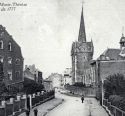
The Verviers revolution at the time of the industrial revolution (bicycle tour) - Just next to industrialized cities such as Verviers and Pepinster, admire the typical grove landscape of this region and its delicacies: Liège syrup, Herve cheese...





